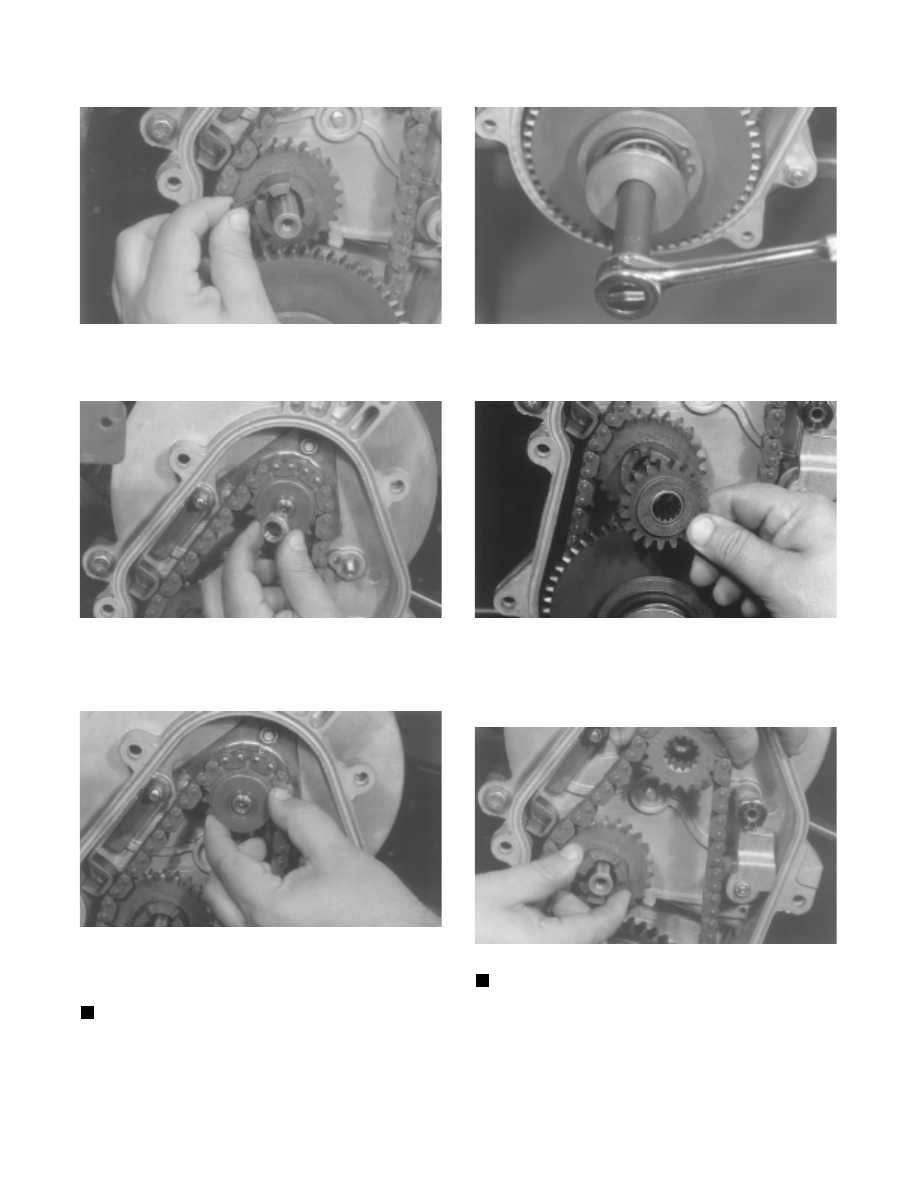Snowmobile Arctic Cat (2000 year). Instruction - part 105

Fig. 8-82
AF439
13. Remove the lock nut securing the top sprocket.
Fig. 8-83
AF432
14. Remove the spring washer in front of the top
sprocket.
Fig. 8-84
AF444
15. Set the brake lever lock. Remove the cap screw and
large washer securing the bottom sprocket.
NOTE: The bottom sprocket cap screw and
washer are spring loaded.
Fig. 8-85
AF428
16. Remove the reverse gear.
Fig. 8-86
AF442
17. Remove the top sprocket, chain, and idler gear.
Account for one shim washer located behind the
idler gear.
Fig. 8-87
AF433
NOTE: If the chain is too tight and won’t allow the
top sprocket to be removed, remove the PTO-side
driven shaft bearing. This will allow the driven shaft
to be lifted at the PTO-side and will loosen the chain.
18. Remove the driveshaft extension, bottom sprocket,
and spacer washer.
8-26